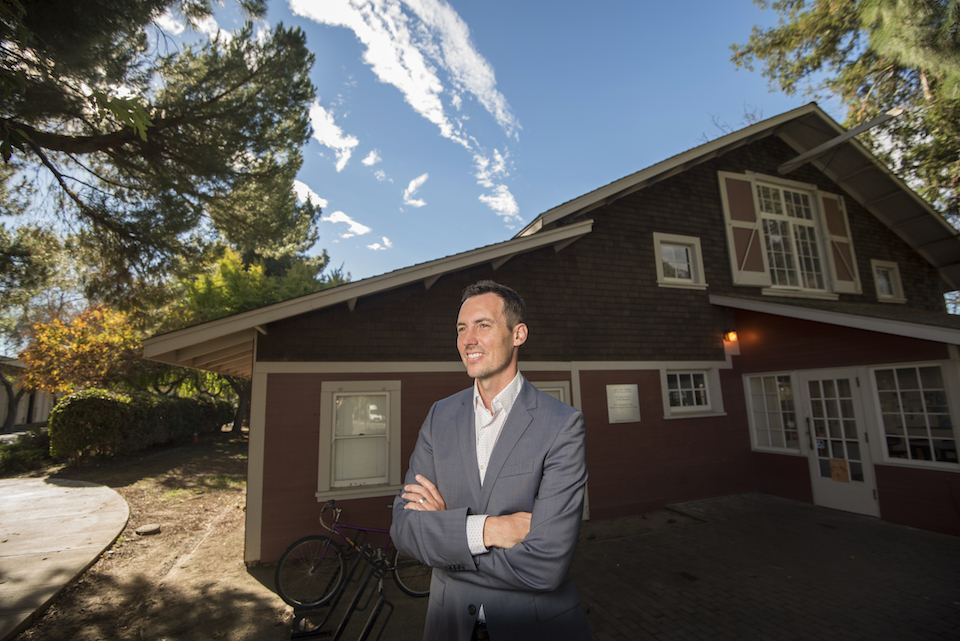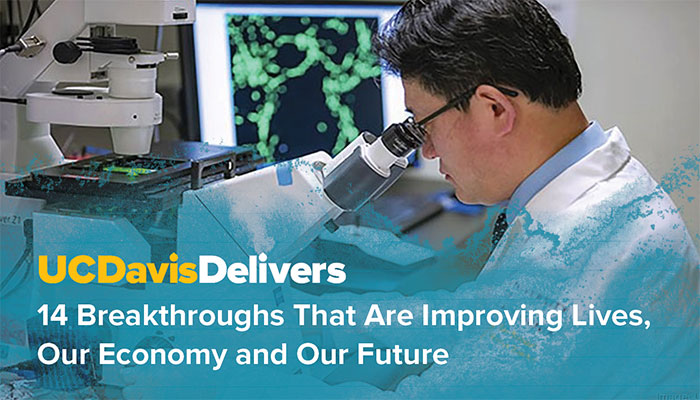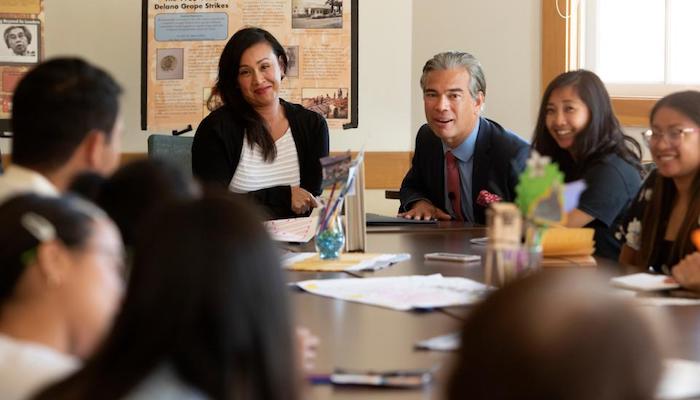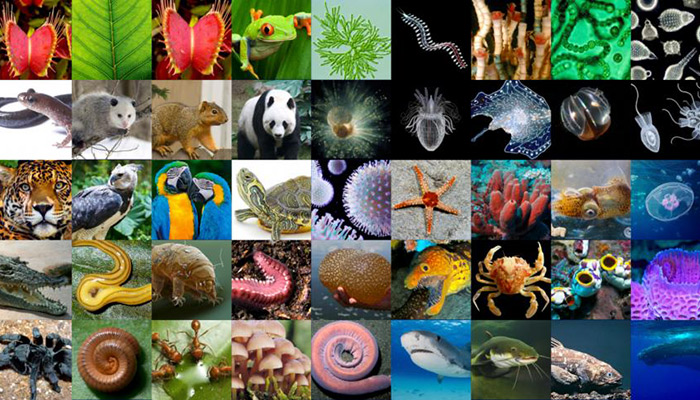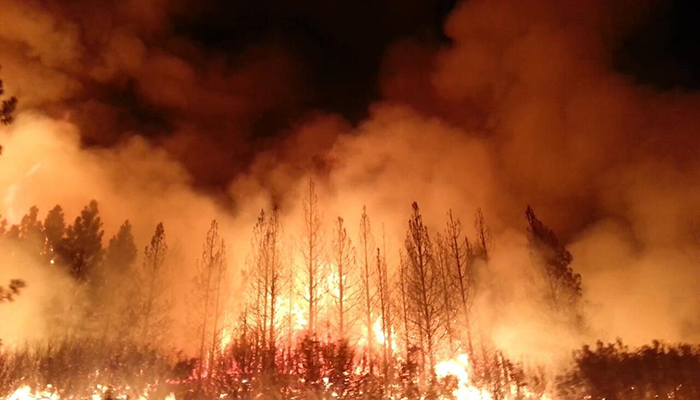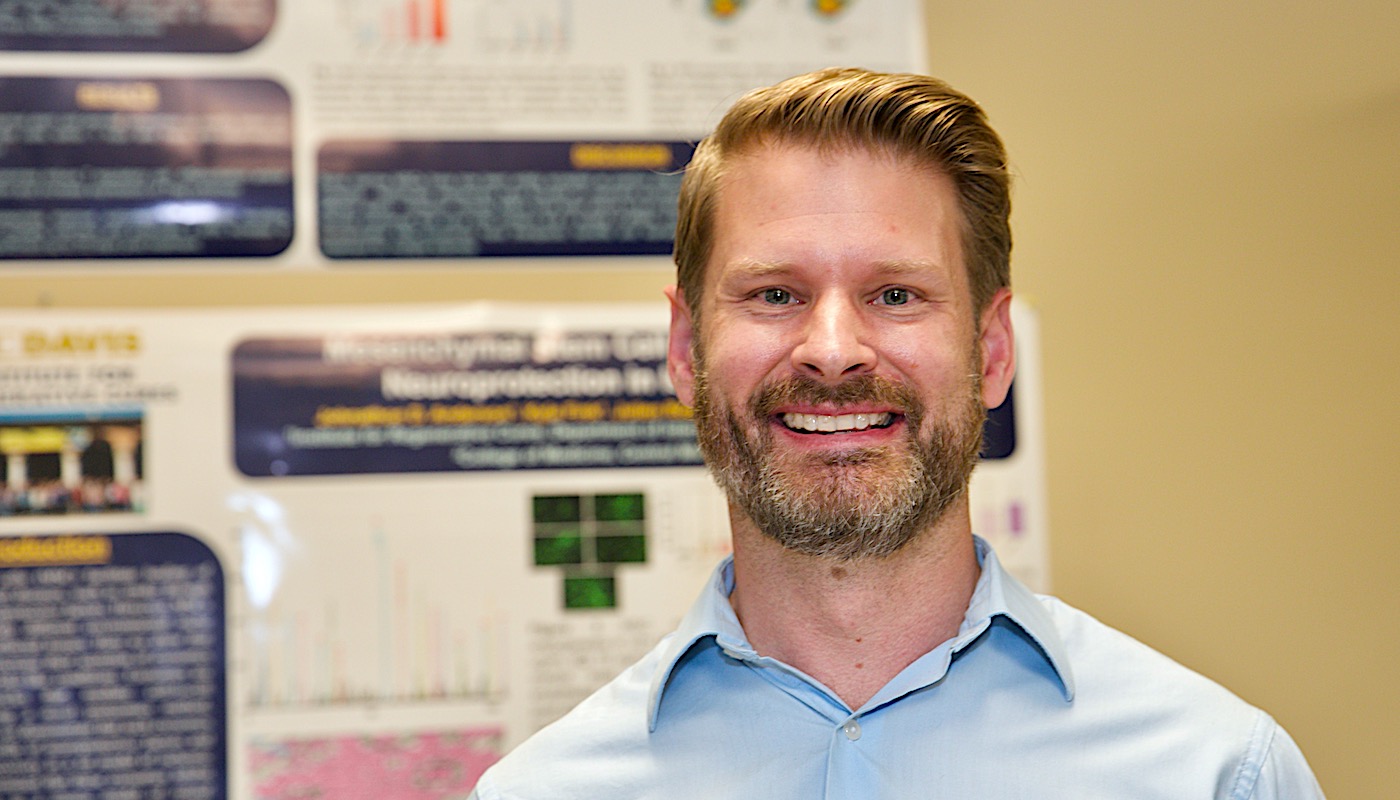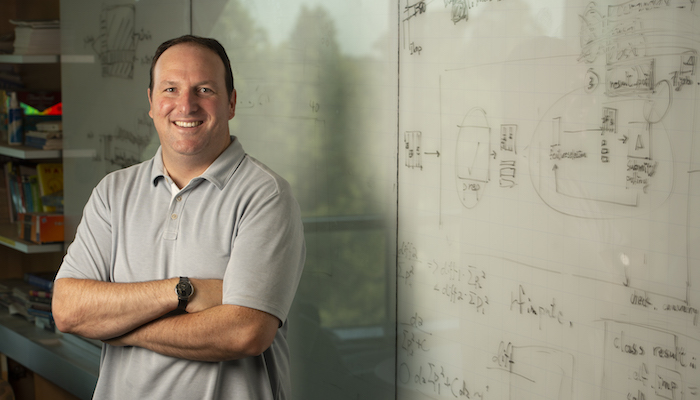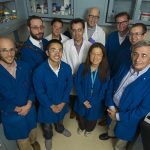Can Ben Houlton Help UC Davis Solve Climate Change?
By Lisa Howard
Ben Houlton hasn’t quite settled into his office in The Barn.
The new director of the John Muir Institute of the Environment took over the program in August from Mark Schwartz, who had steered the program for seven years.
The 41-year-old professor in the Department of Land, Air and Water Resources, looks around at the cluttered collection of dated and mismatched wooden office furniture that seems ubiquitous on University of California campuses. “I don’t think Mark cared, but I need something more minimal.” Houlton smiles. “Maybe just a desk and a table.”
Houlton is busy mapping out strategies for a very ambitious goal: Using the resources of JMIE, one of the largest and most well connected institutes on campus, to help UC Davis become a key player in solving the challenges of global climate change.
California has been at the forefront of tackling climate change for decades. And UC Davis is a powerful player when it comes to the research and knowledge critical for solving climate change, ranking first in the world for plant and animal sciences, second for agriculture and forestry, and fourth for environment and ecology. And the JMIE has been committed to its mission of discovering, researching and solving pressing environmental and human health challenges for almost twenty years.
Houlton’s expertise in global biogeochemical cycles—particularly nitrogen—positions him to understand the complexities of the science involved in climate change. But his motivation for wanting to fix what’s wrong goes all the way back to his childhood.
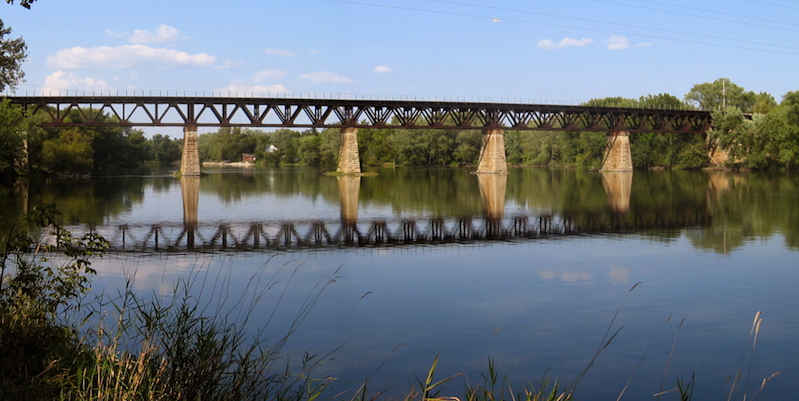
The Fox River is a tributary of the Illinois River, and runs through Houlton’s home town of Waukesha, Wisconsin.
Pollution in the global commons
Two rivers figure prominently in Houlton’s development as an environmentalist and scientist.
Growing up in Waukesha, Wisconsin, in the 1980s, he and his family lived across the street from the Fox River. Industries and agriculture up-stream had dumped PCBs, nitrogen and phosphorus into the river, almost wiping out native fish species like the smallmouth bass.
Houlton was inquisitive (his parents gave him his first chemistry set in first or second grade), and spent a lot of time outdoors camping and fishing. He remembers thinking even when he was young that the damage to the Fox River seemed like something that should be fixed. Or that could have been avoided to start with. “It really left an imprint on me. As well as a sense of obligation.”
The second river that shaped him as a scientist was his work on the Little Plover River while he was pursuing his B.S. in water chemistry from the University of Wisconsin, Stevens Point. The research he did for one of his professors during his sophomore, junior and senior years involved using the presence of chlorofluorocarbon, known as CFC, to age-date the groundwater entering the stream.

UC Davis postdoc Edith Bai and Benjamin Houlton in 2010. Nitrogen has been a key focus of Houlton’s research. In 2015, Houlton’s group published on a new isotopic fingerprinting method to trace nitrogen’s journey through the global environment.
But in addition to monitoring ozone-depleting CFC, Houlton also noticed that although the river had areas that were heavily polluted by nitrogen fertilizer and pesticides from the surrounding agricultural land, it also had areas where there was no evidence of pollution. Where the river looked pristine.
What he discovered, and what would become the basis for his first scientific presentation, was that the unpolluted areas of the river had a very deep groundwater flow path. The pristine water had entered the water system before the heavy use of nitrogen and pesticides. “It was like 70-year-old water whereas the water that was entering in the polluted areas was about 5 to 10 years. So the river recorded the historical legacy of human activities,” says Houlton.
What was clear to Houlton with both rivers was that there had been a before and an after. A better and then a worse. Much worse. And the worse wasn’t from some unpreventable problem. Rather, the change—the damage—was the result of specific actions: Dumping polluting substances into the “global commons.”
Air is a global common. The oceans and freshwater are global commons. And without any disincentive to dump garbage—from excess nitrogen to toxic chemicals to plastic waste—people do. The impact of this abuse is to change the basic makeup of the global commons, in many cases destroying ecosystems and the many species that inhabited them.
Houlton gives nitrogen as an example. Nitrogen fertilizer grows more food, which means it creates more profits. Farmers don’t pay anything for the excess nitrogen that subsequently flows into waterways and damages ecosystems. But Houlton has studied the global nitrogen cycle, and the reality is that dumping it into the global commons is not free, not by a long shot.
“If you look at the economic impacts globally from excessive fertilizer it’s about a trillion dollars a year. It causes all sorts of problems for the human health, biodiversity and the climate.” Citing a World Health Organization study released in 2014, Houlton notes that “nitrogen oxides are the main contributor to the ground level ozone pollution that causes millions of premature deaths worldwide.” He says a modest estimate of the damage from excessive nitrogen in just the United States is about $200 billion a year.
But it’s complicated. “If our food system wasn’t for profit we’d have a very different system. Economists tell us ‘that which is not paid for is overused.’ What’s not regulated turns into a waste dump.” He’d like to see something like a tax, although he recognizes it’s not a popular word. “But if we don’t become more mindful about having a carbon tax and nitrogen tax we are in serious trouble.”
Cross-disciplinary approaches to problem solving
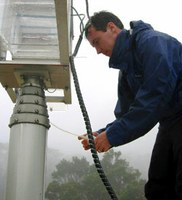
Houlton collects fog water in a Hawaiian rainforest.
A persistent thread throughout Houlton’s academic career has been to apply—or perhaps appropriate—insights and techniques from different disciplines to solve problems and create new knowledge or tools.
After receiving his degree in water chemistry, Houlton studied environmental engineering science at Syracuse University, applying engineering and mathematical concepts to how the natural world works. For his Ph.D. at Princeton, he explored the ecological imprints of tiny microorganisms on biogeochemical cycles.
When he was a doctoral student at Princeton, and later as a postdoc at Stanford, Houlton participated in a multidisciplinary research project in Hawaii. Geologists, microbiologists, plant scientists and social scientists all worked together on the volcanic island chain, each researching widely different topics, from looking at pre-contact Hawaiian culture, to climate change over 30,000 years, to ecosystem development on regions as diverse as fresh lava to the island of Kauai, the oldest of the archipelago at about five million years old.
“It gave me a real dose of how you can develop highly collaborative projects that cut across all different domains. That cross-fertilization can give rise to a whole suite of novel discoveries.”
Houlton uses this kind of cross-disciplinary thinking in his own research, such as applying economic models to understand how plant soil and biosphere interactions work. “Ecosystems are inherently economical. They’re trying to use the least amount of energy for the maximum gain. Using principles of optimization derived from economics I could explain a whole bunch of problems in global ecology that people were having a lot of trouble understanding. And that gave rise to a whole suite of climate modeling opportunities.”
Plans for JMIE include interdisciplinary projects, big data
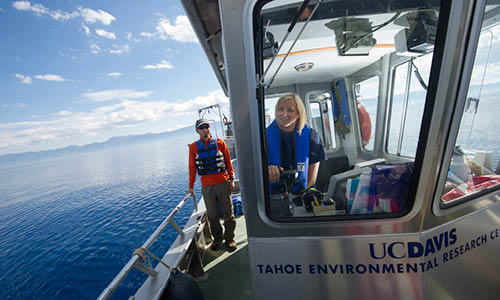
Tahoe Environmental Research Center, one of several centers that are part of JMIE
Houlton compares what needs to be done with climate change as being as complicated, if not more so, than the push in the 1960s to land a man on the moon. But although his goals for JMIE are lofty, the immediate plans he’s working on are specific and tangible. One of the first initiatives, OneClimate, is an interdisciplinary project to bring campus centers and institutes together to focus on the science of climate change, the mitigation of greenhouse gases, and plant and animal adaptation.
Anther interdisciplinary area where he sees the possibility for big impact is with the use of “big data,” compiling large data sets from diverse sources and using machine-learning techniques to develop visualization tools for resource managers, policymakers and the public.
Houlton would also like to see JMIE amplify information about the environmental research and experts on campus. He is developing a platform that can quickly connect campus experts with whoever needs the information.
And he is still teaching. His “Global Environmental Interactions” course, offered this winter, is always popular. He is also married, with two kids, and somehow finds time to coach his daughter’s soccer team.
Houlton says his strategy is to focus on what he is doing in the moment and to also see it all as a continuum of humanity and nature. Perhaps not surprisingly, his favorite book is Zen and the Art of Motorcycle Maintenance by Robert M. Pirsig. He sees his role as primarily being a conduit to help others. “I will work on it and hope something good comes from it. But it’s not about me. It’s about creating something that’s much bigger. I just want to see good things happen in the world, and frankly I don’t care where they come from.”
As for The Barn, although his budget is limited, Houlton has plans for remodeling—more than just getting rid of mismatched furniture in his office.
The wood-frame building was built in 1914 to house beef cattle. As the campus grew, the Beef Barn proved to be too close to central campus, so the cattle were moved to a new barn in 1953. In the late 1960s the original cow barn was renovated for the Architects and Engineers Office, the former cow stalls converted into offices. JMIE has had the space since 2004 and shares it with several other campus programs.
Houlton points toward the back of the building and describes how he wants to remove some of the walls and open up the offices. Create some open workspaces. Maybe create an outdoor work area. Offer standing workstations. “We want to revamp some of the indoor space that makes it look a little bit more like you’d find if you went to Silicon Valley.”
His reasons for redesign, though, are not merely aesthetic. He wants to gradually modernize the institute on every level. “Changing the space gives people a sense of something bigger happening. And that’s really what it takes sometimes,” says Houlton.
Media Contacts
- Benjamin Z. Houlton, Land Air Water Resources, 530-752-2210, [email protected]
- Lisa Howard, Office of Research, 530-752-8117, [email protected]
Media Resources
- John Muir Institute of the Environment
- New Director of JMIE Looks to Solve Complex Environmental Problems
- Nitrogen Fingerprints Point to Warmer World
- Bedrock Nitrogen May Help Forests Buffer Climate Change
Latest News & Events

